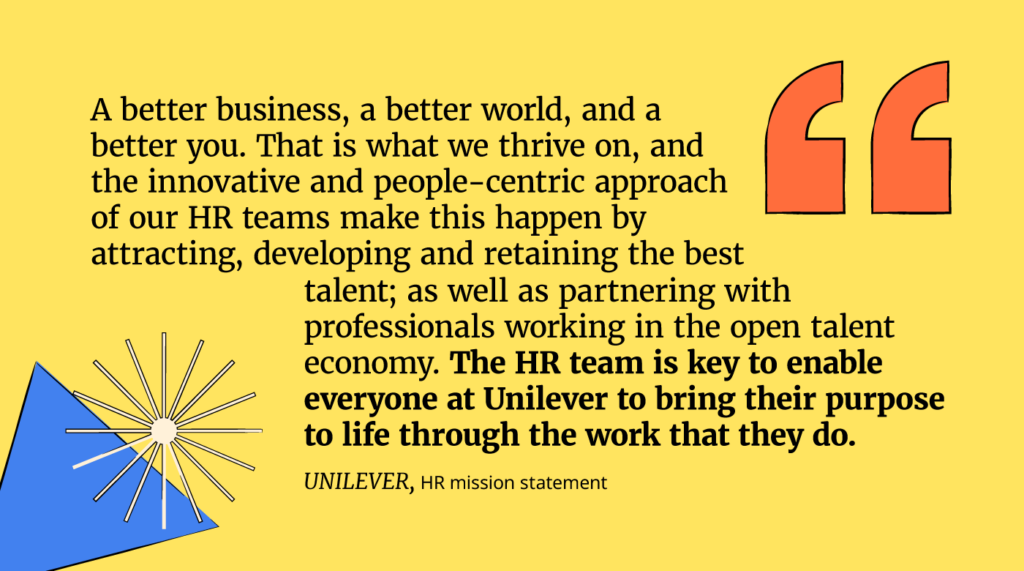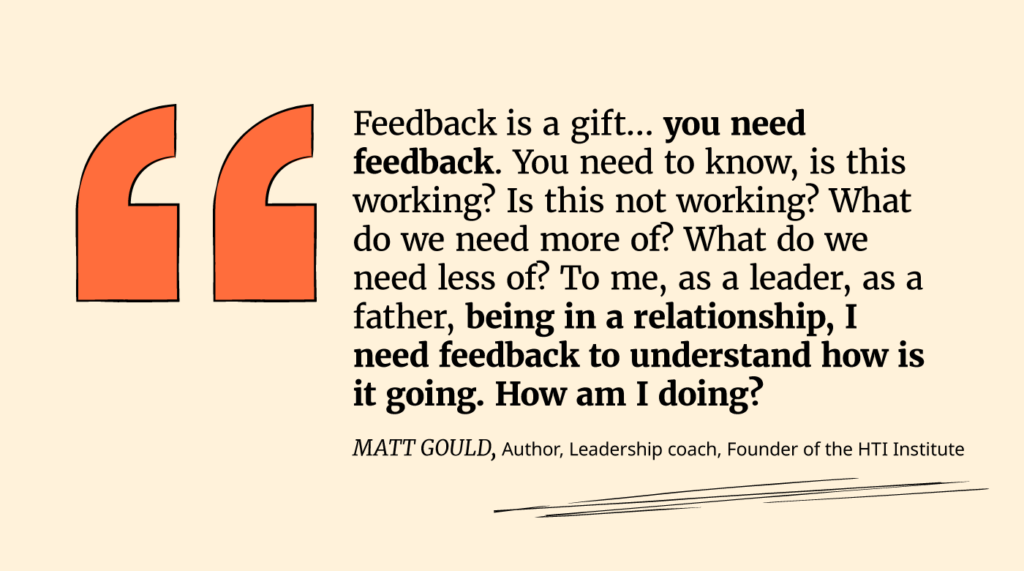What is an organization without its people?
A good idea needs a happy, functioning team to execute it. And one with the right set of skills. This is true of a project within a 150,000-strong company like Microsoft or an SME with 25 industrious souls. Without the right team willing to put the effort in, the chances of success are slim.
The role of human resources, therefore, is a crucial one. We're tasked with keeping employees healthy and engaged, and play a vital role in helping the organization meet its goals by ensuring the right people are in the right positions at the right time.
In small and medium-sized organizations, the HR function is just as important as in a large firm but, sometimes, isn’t approached with the same level of professional dedication.
Read on if you’re interested in learning about how to approach human resource management (HRM) in small and medium enterprises. Of course, larger organizations can take note as well.
What Is Human Resource Management?
Very quickly before we dive in, HRM is a strategic approach to managing the precious resource that is people. Ultimately, the aim is to help the business achieve sustainable growth through effective talent management.
HR managers are tasked with troubleshooting issues and providing guidance and direction for fellow workers. HRM functions include:
- Recruitment - sourcing, attracting, hiring, and onboarding new talent with recruitment software for small business
- Training and development - aiding the training and development of employees
- Employee experience - creating the foundation for an environment where employees can thrive, grow & develop, and feel the support and recognition of others
- Retention strategies - strategic actions for retaining employees
- Employee relations - helping maintain a positive relationship between employer and employees and acting as an intermediary in employee disputes
- Compliance - ensuring an organization operates within employment laws
- HR accounting - measuring and analyzing the financial impact of HR practices, including workforce costs, productivity, and return on investment in people.
Yes HRM is partly admin, but it’s important that admin—in key areas such as payroll and benefits and necessary HR documentation—is handled efficiently. This is the minimum that employees expect!
But the progression of HR today is not admin-focused but more analytical. It’s about using data to guide organizational development from a people perspective.
With the democratization of HRMS and other technologies, much of the admin side of things can be automated or taken care of by the employees themselves, allowing those in charge of HR the capacity for more strategic thinking and experimentation.
How Does Human Resource Management Differ in Small and Medium Companies?
While the overall goals of HRM are the same across organizations, the methods for achieving those goals vary depending on factors such as size and resources.
Size
Large organizations require HR departments comprising specialists in the various functions. In smaller enterprises, HRM is generally the job of one to five people. The functions could be split between anyone from the CEO, operations manager, HR manager, people and culture manager, or internal recruiter.
In general, HR teams in small businesses won’t have access to the same level of resources as large organizations. They have to make do with less, and HR managers have to be a bit creative and choose strategies and tools that correspond with their budget.
For example, in small to medium enterprises, payroll may be apart of HR duties to keep overhead low; but in larger businesses, there will probably be a dedicated accounting/payroll department.
Responsibilities
As alluded to above, due to smaller team size, HR managers in SMEs will likely be tasked with a mix of responsibilities (sometimes not even HR-related), whereas in a larger organization, the role will likely be more specialized.
A study into Portuguese SMEs found that HRM in small organizations reflects a “constant informality.”
This is great for HR professionals who enjoy variation and taking on new roles and responsibilities. In a smaller firm, there’s generally more room for creativity and it’s the job of those tasked with HR to lay the foundations for organizational growth.
Related read: Key Human Resources Responsibilities
From Admin to Strategy
As your organization grows, so will the HR department. At least it should, anyway.
Sometimes an organization will grow and hire an HR person to cover purely the administration and keep on the right side of compliance. They’ll also probably get handed recruitment, workforce management, finances, and maybe even general office management.
But under-investing in HR, and stretching the department too thin, means missing out on the strategic value that focused and experienced HR people can bring.
Investing in good HR people and processes is an investment in your wider workforce.
They’ll help you and your leadership team scale your org and identify key needs to hit overall business goals.
It might be that you outsource the administrative functions and hire someone who focuses solely on developing people and processes and building the culture you want.
Today, I’ve found that more and more HR professionals are approaching their work in an agile way, acting as something akin to product managers for the company culture.
This means collecting feedback, trying something on a small scale, collecting more feedback, adjusting, and either trying again or launching across the company.
HRM in Your Small or Medium-Sized Business: What To Focus On
If you’re a leader within an organization and are responsible for managing people then, in one way or another, your job is HR-related.
Every organization is different but, whatever your HR department looks like, there are some universal HR best practices that benefit every organization.
Be Proactive, Not Reactive
It can be that HR is seen as red tape—an administrative and cost burden that gets in the way of sales and profit. For this reason, it is often overlooked until the last minute when the organization needs to dig itself out of a hole.
This perception makes organizations “HR shy”, and reluctant to make a proper investment. It’s also why if you’re reading this as an HR professional you might agree when people say it’s a “thankless job”.
But investing in HR earlier will pay dividends later down the line. It’s a case of being proactive instead of reactive. If you fail to think about people before it’s too late, then the cost will be unmotivated and maybe even unhealthy employees.
If you’re reading this as an HR professional frustrated with how your organization approaches HR, then you can be more than just a paper pusher!
Show value by learning about different parts of the business and demonstrating how you can help solve business problems with people-centric solutions.
Set a Strategic Goal
If you’re hiring an HR person to do more than just basic admin, or you’re the person being hired to manage HR, then it’s important to work together to set clear strategic goals for the HR function.
This means first setting out a vision and a statement that ties together the business goals and core values with what kind of culture you’d like to build.
This is an example of an HR mission statement from Unilever:

Once HR starts to be viewed as a strategic, profit-driving department within the organization, it will get more buy-in, budget, etc.
Develop and Support Company Values
Your company’s values act as a set of guiding principles that influence both strategy and culture. They help teams work together towards a common business goal. They don’t have to be super unique, just what your team… well... values.
The advantage of a small team is that it’s easier to get input from employees regarding what these values should be. Opening up this process can lead to much more engaged employees who are invested in the organization’s mission.
When your values are in place, it’s HR’s job to ensure they’re upheld and considered when it comes to functions such as hiring and employee recognition.
Check out these company values examples for some inspo.
Create and Communicate Your Roadmap
It’s important you create an HR roadmap. Not only for your own benefit but so that team members can see the types of projects you’re working on and the value you think they’ll add.
Not all decisions you make as an HR team will be popular, especially if it involves shaking up “the way things are normally done”. That’s why it’s important to clearly communicate the reason for any changes you might make and get buy-in from employees, taking the time to answer questions and demonstrate how your new process or strategy will benefit everyone in the long run.
Further, open and regular communication with employees sets a precedent for a collaborative culture in which employees feel heard and empowered to contribute ideas.
Collect Feedback Regularly
In keeping with open communication is collecting feedback. As Matt Gould, author, leadership coach, founder of the HTI Institute, and recent podcast guest on the topic put it so nicely:

Collecting feedback, both good and bad, using methods such as surveys, suggestion boxes, town halls, and performance reviews is valuable for building a better employee experience.
This is a crucial aspect of the ‘HR as a product manager’ metaphor I mentioned earlier.
Build A Robust Performance Management Process
Regardless of team size, employees appreciate (good) performance management because this helps give them a clear indicator of what they’ve achieved and what they need to work on. This is more than just the annual performance review.
Ideally, strive to implement a continuous performance management process with regular feedback that allows managers to act more like mentors and coaches. It’s also important to include development & career pathing as part of this, too.
Here’s a more comprehensive guide to developing an effective performance management system.
Invest in Training and Development
Training and development (T&D) is closely tied to performance management. SMEs are less likely to invest in T&D because of the lack of resources. However, in smaller organizations and particularly startups, employees can find themselves performing roles, especially managerial, with no prior training.
Putting some resources aside for T&D, even if it’s just time for employees to educate themselves, helps them 1) to do their job more effectively and 2) will increase their motivation. Use the budget to partner with experts such as coaching platforms or external training tools.
Get Down Some Policies and Shared Documentation
As your business grows, alongside the burgeoning trend in remote and international workforces, it will save everyone time in the long run if some time is taken to create uniform HR policies and processes around basic functions such as booking time off and managing expenses and perks.
These can be reposited in shared workplace apps such as Slite or Notion, easily accessible by everyone.
Craft A Good Onboarding Experience
Startup recruitment can be expensive so it’s important to give new employees a great experience from the get-go.
Regardless of organizational size, it’s worth putting time and effort into crafting an onboarding experience that will help get new hires bed in faster, be motivated for their new role, and increase the likelihood of them staying.
Ideally, your onboarding program will extend from when the new recruit signs the offer letter up until their first 90 days. Our onboarding platform at Ordergroove has tasks for them (all fun) ahead of starting to get them to know the org, meet their team, and share things about themselves.
Read more about the best onboarding practices and how to create a 30, 60, and 90-day plan.
Embrace Technology
It used to be that HR technologies were enterprise packages only affordable for large organizations.
Today, however, the benefits of HR software are attainable for businesses of all sizes, with many vendors catering to the SME market with affordable, cloud-based HR solutions and apps.
Human resource management systems (HRMS), can help you deal with the administrative side of HR and support processes such as performance management. Common features include:
- Time and attendance management
- Applicant tracking systems
- Compliance
- Benefits administration
- HR software with payroll
- Forecasting solutions
- Timesheets
- Onboarding
- Employee scheduling
There’s also a galaxy of modern HR tools out there to help you with other important functions such as collecting employee feedback, facilitating peer recognition, and building relationships.
Rather than relying on one tool to handle everything (despite what the salespeople say), to realise the full benefits of HR software, it's often best to combine tools into an integrated and flexible HR tech stack.
Outsource
Much like using technology can help relieve the administrative burden and free up time for more strategic work, outsourcing HR functions can help here too.
This could be outsourcing payroll or other administrative functions to a payroll company, professional employer organization (PEO), or employer of record (EOR, great for hiring internationally).
For guidance on the potential benefits and considerations, check out our articles on what is a PEO, and what is an EOR.
Questions? Try the Community
The People Managing People community is a space for people managers and culture creators to develop as leaders and connect with other like-minded individuals.
You’ll receive access to our exclusive Slack Community as well as regular workshops and other exclusive content to help you become a better leader of people and catalyst for healthy company culture.
Learn more about the People Managing People Community.
You can also subscribe to the newsletter to get updates when we publish fresh articles and podcasts with the latest thinking from people and culture experts from around the world.
Related Reads:
- 7 Ways To Improve Employee Relations In Your Organization
- What is an Employer of Record?
- 10 best professional employer organizations (PEO)
- 10 best employer of record (EOR)
- 10 best HRIS for small businesses
- What is workforce management software?
- Building An HR Department: A Step-By-Step Guide
- How To Elevate HR As A Strategic Partner Of The Business



